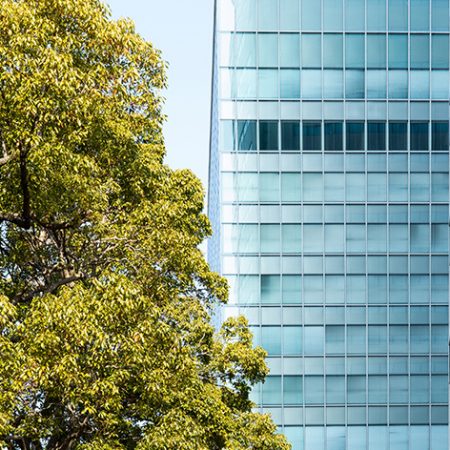Sustainable water management is one of the most pressing challenges facing cities. The UN predicts 68% of the world’s population, totalling 6.3 billion people, will be living in urban areas by 2050, up 57% on 2021 levels.
As rapid urbanisation continues around the world, cities are seeking new sources of clean water and increasing their wastewater discharge. This is disrupting surrounding communities and ecosystems.
At the same time, climate change is affecting water supply and sanitation more than ever. Increasing droughts, flood damage and contamination are reducing water availability. The number of city dwellers lacking access to safely managed drinking water has risen by more than 50% over the past two decades.
Preparing for climate change
However, urban planning is not keeping pace with population growth. To prepare for climate change, urban development strategies must prioritise water management along with pollution control, the built environment and solid waste management.
Planners need to adopt innovative approaches to conserve water, protect its quality and limit the impact of urbanisation on supply. And we can all play a role in conserving this precious resource.
Some effective solutions already exist, and various cities are beginning to devise strategies to improve the long-term resilience of their water systems.
Building “circular” systems that recycle and reuse water is key. Redirecting treated wastewater to industrial processes and irrigation systems can help conserve water and support the resilience of urban supply. Countries struggling with water scarcity can learn from those that have got it right, such as China.
China’s water management plan
Faced with severe droughts and growing demand from rapid industrialisation and population growth, China has made significant progress in water conservation recently, through initiatives that include its water security five-year plan.
The 2021-2025 plan has set out four goals for the country’s national water security: conservation; improving flood and drought prevention; optimising supply and allocation capacity; and strengthening ecological protection of large rivers and lakes.
The plan integrates water-saving measures into urban planning to alleviate shortages in many cities. This includes the sponge city programme, which is designed to manage rainwater and prevent flooding while replenishing depleted groundwater through natural resources and infrastructure, such as wetlands, rain gardens and green roofs. Cities are using stormwater runoff for irrigation, street cleaning or firefighting, and tapping into unconventional water sources, such as reclaimed wastewater and brackish water.
The plan also encourages farmers to increase their efficiency through advanced irrigation techniques, low-water crop cultivation and the adoption of new technologies.
UK National Framework for Water Resources, a collaborative approach
The UK Government has developed a national framework that aims to address the challenges and identify the opportunities in water resources planning. It sets out how regional groups can bring together water companies and those with an interest in water resilience – such as farmers, environmental protection groups and energy producers – to meet long-term water needs.
One example of a collaborative approach to water resources is the Felixstowe Hydrocycle project, a collaboration between the Environment Agency, Suffolk County Council, the East Suffolk Internal Drainage Board, the University of East Anglia and a number of farmers.
The project protects the coastal salt marshes by capturing excess water before it reaches them. Via a series of pipelines, the water is redirected into on-farm storage reservoirs which is then used to irrigate crops. The Felixstowe Hydrocycle also features a managed aquifer system, which protects groundwater levels. As well as providing a sustainable water supply for local businesses, the project helps farmers improve their resilience to climate change. It helps protect coastal ecosystems and wildlife too, by rerouting excess drainage water away from salt marshes and other sensitive environments.
Urban-rural cooperation in resource management
Population growth leads to an increased requirement for drinking water and increased demand for water to produce the necessary amounts of food. Other challenges include climate change impacts, water abstraction and a need to protect the environment.
Studies indicate that the world will need to produce 50-60% more food by 2050 to feed a population that could reach 9.8 billion by then – yet rising global temperatures are forecast to deplete crop yields by 3-12%.
Urban centres and agricultural industries must work together to protect cities while optimising resource management to ensure the agriculture and horticulture sectors are not deprived of water supply.
“In 2015 China announced a programme to develop ‘sponge cities’ to capture storm runoff rather than discharging it into rivers or seas” according to Sam Crispin, Head of Sustainability and ESG, Savills APAC. “The concept tackles different water resource problems in different parts of the country, northern China is typically very dry so cities like Beijing and Xian aim to relieve the pressure on groundwater extraction as much as possible by maximising rainwater capture. Other cities such as Wuhan experience regular flooding and in this case the sponge city concept is to prioritise quick capture and retention for later use.” Crispin notes the potential for additional economic benefits through enhancing land values around reservoirs, additional tourism and leisure uses and the savings through grey water use.
The essential role of agriculture
Agriculture has a central role to play in implementing water management, from land oversight and improving soil health to increasing storage capacity and implementing nature-based solutions to improve water quality and water resources.
Water scarcity not only acts as a barrier to urban development, it also poses major challenges for global food production. Agriculture accounts for around 70% of global freshwater use, so water supply shortages compromise food security – as do periods of intense rainfall. In the UK, where the impact of climate change is likely to be drier summers and wetter winters, the south of England recently had its wettest February since 1836. Increased rainfall can increase soil erosion which impacts crop yields and water quality.
Times of prolonged dry weather and drought have an impact in the food-producing regions. This then becomes a food security issue, as countries with high water sustainability scores (see table) often import fresh produce from countries with poor scores that may not be able to maintain their supply in the future. This is a common problem in western nations, and rising geopolitical tensions add to the risk of supply disruptions, indicating the complexity of these interrelated ecosystems.
Water trading in California
California faces an ongoing water crisis. A multi-decade drought, exacerbated by climate change, water overuse and growing demand, has depleted the reservoirs served by the Colorado River, one of its primary water sources.
The river also generates hydroelectricity and irrigates farms that supply most of the country’s winter vegetables. Farmers are increasingly limited in the amount of groundwater they can pump, as the land in the San Joaquin Valley is sinking from over-abstraction.
One approach to managing scarce supply, which could be applied elsewhere around the world, is California’s water market, which ensures efficient water allocation and resilience. Buyers and sellers trade water rights through different mechanisms. During droughts, temporary leases help transfer water rights to areas where they’re needed the most. Long-term leases accommodate structural shifts in water demand driven by population growth or economic development. Sellers can also transfer their water rights permanently.
Around 1.5 million acre-feet of water – nearly two cubic kilometres – is traded in California annually, equivalent to about 4% of all the water used by cities and farms statewide. Farms lacking reliable water supplies receive support, but they are more likely to be significant sellers, as they hold about four times as many water rights as cities. Growing urban areas in the central valley and southern California are major buyers.
Cities in southern California receive almost 15% of their supplies from trading water rights. Water purchases also support environmental protection, including wildlife refuges, orchards, fisheries and reducing salinity in the Salton Sea.
Collective global water management efforts are imperative
Urbanisation, population growth and increasingly extreme weather conditions are changing the way we view water.
“We must recognise that it is a finite resource that needs to be managed wisely. It requires a fine balance and behavioural change to ensure cities and the agriculture sector have the water they need to support healthy populations,“ says Kelly Hewson-Fisher, Director, Head of Rural & Projects Research at Savills.
Despite the challenges, solutions are emerging that can be effective – as long as there is careful planning. Collaboration is essential: no single sector can solve the challenges. But together we can secure the availability of a resource that’s essential to the long-term resilience of our cities.
Savills Global Water Sustainability Index ranks countries using the Sanitation & Drinking Water, Wastewater Treatment, Sustainable Nitrogen Management Index indicators from Yale University’s Environmental Performance Index 2022.
Rather than measuring availability or consumption, it highlights those locations that are aware of their water constraints and have already taken steps to future-proof their supply.
The “Global West” region has the highest average score and dominates the top 10. Of the 22 “Global West” nations considered, 18 are in the top quarter of the rankings (90%). “Eastern Europe” places second, closely followed by the “Greater Middle East”.
“Sub-Saharan” Africa is the lowest scoring region. There are some exceptions – Zimbabwe, South Africa and Eswatini are all in the top half.
Water Sustainability Index
Source: Savills Research based on Yale University’s Environmental Performance Index 2022.
Dr Tom Young, Nuffield Farming Scholar
For my Nuffield Farming Scholarship, I wanted to travel to locations experiencing severe water stress to observe methods and technologies used to improve water security, as well as understand common barriers preventing uptake of these methods.
Successful water security solutions observed on my travels included use of treated wastewater either directly or to recharge ground aquifers; large scale rainwater harvesting; use of data to inform irrigation regimes; water efficient irrigation such as sub-surface drip; crop breeding to improve water efficiency; desalinated water; supply chain water resilience management; and holistic landscape level soil management. All of these allowed users to become less reliant on conventional sources of water, and also manage their limited resources more effectively.
Universally users implementing these solutions have experienced multiple barriers preventing their uptake. These include financial risk of investment; stakeholder resistance to change; lack of industry knowledge on alternative methods; innovation restricted by regulation; challenges of inter-disciplinary working; and a lack of long-term planning.
However, I observed many examples of stakeholders overcoming these barriers to implement water resilient projects. Prevailing patterns among these success stories include stakeholders driving projects forward; support and long-term government planning; inter-disciplinary working; and local ownership of problems and delivery of solutions.
Given the complexity of the issue, addressing the issue of water security demands an integrated approach. None of these solutions will be straightforward to implement and will necessitate significant shifts in the industry, government and supply chain’s attitude to water management.



